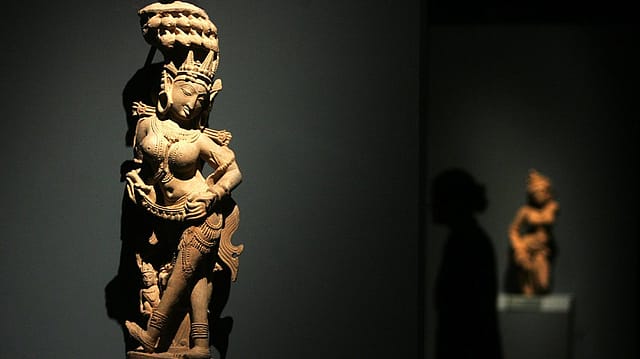Art market trends to watch out for in 2018
ADVERTISEMENT

It hasn’t been the best of times for the Indian art market. Business had barely recovered from the 2008 economic crisis when it hit another massive roadblock: demonetisation.
But 2018 could be different. With the economy beginning to look up, the rich may splurge all over again on everything from antiquities to contemporary art–and they are also likely to expand to folk, tribal and Asian art.
Art experts are optimistic about the antiquities market because of the draft Antiquities and Art Treasures Regulation, Export and Import Bill, 2017, which seeks to scrap special licences for selling art objects more than 100 years old within the country. Under the present Antiquities and Art Treasures Act, 1972, traders cannot sell antiques like coins, sculptures, paintings, or other works of art without obtaining a licence from the government which is perceived as cumbersome.
Anders Petterson, founder of London-based art market research firm ArtTactic, sees last year’s $24.7 million sale of a 12th century black stone figure of Lokanatha Avalokiteshvara at Christie’s in New York as a sign of things to come. He says it “elevated the Indian antiquities market to a new level, and is likely to stimulate further interest in this collecting category among both domestic and international collectors”.
January 2026
Netflix, which has been in India for a decade, has successfully struck a balance between high-class premium content and pricing that attracts a range of customers. Find out how the U.S. streaming giant evolved in India, plus an exclusive interview with CEO Ted Sarandos. Also read about the Best Investments for 2026, and how rising growth and easing inflation will come in handy for finance minister Nirmala Sitharaman as she prepares Budget 2026.
Last year, the Indian art market gained fresh vigour when late Indian modernist Bhupen Khakar upset the applecart of the big five–V.S. Gaitonde, Tyeb Mehta, M.F. Husain, S.H. Raza and F.N. Souza–to set a new sale record of Rs 9.5 crore with his De-Luxe Tailors (1972) at a Sotheby’s auction. But Hugo Weihe, CEO of Saffronart, concedes that the overarching influence of Modern masters is not going to be sustainable in the long-term. So, you can expect to see a more diversified palette from online auction houses such as Saffronart, AstaGuru, Artiana, and Prinseps. “We want to expand the field and get new people interested in different categories like Folk and Tribal art, Asian art (Chinese, Himalayan and Asian) which is an exciting and emerging field. There is so much to be discovered,” says Weihe.
Online auction houses and social media will continue to drive traffic in the way buyers discover, learn and transact art. Saffronart expects 20% growth in India. “Although the Indian auction houses have had an online presence for a long time, we will start to see more Indian galleries focussing on the online channel going forward,” says Petterson.
But the really high-value sales will continue to be in physical auctions and the prices of works by Modern masters like Gaitonde, Mehta, and M.F. Husain will continue to climb.
Artery India says online auction sales last year were at Rs 216.1 crore compared with Rs 316 crore in physical sales. And these numbers are only likely to grow with private patronage set to go up and more and more business families and tycoons investing in art. “Personal collections, with a varying measure of investment appetite ranging from an annual capital base of Rs 5 to 10 crore, will widen,” says Arvind Vijaymohan, founder and CEO of art market research firm Artery India.
Thanks to international exhibitions like the ongoing Nalini Malani : La rébellion des morts, rétrospective 1969-2018 at the Centre Pompidou in Paris, Indian contemporary art is also set stage a comeback. “Though the market recorded a drop in the Contemporary category turnover post demonetisation, we are expecting a resurgence in the performance of this category in 2018, following a range of important museum and institutional shows,” says Vijaymohan.
Overall, Vijaymohan forecasts Indian art’s share of global auction sales will grow to 2%- 2.5% of global auction sales from 1.5% in 2017. The rush is set to be propelled by Pre-Modern and Modern collections, as well as acquisitions and commissions of works by mid-career contemporary artists like L.N. Tallur, A. Balasubramaniam, Jagannath Panda, Gigi Scaria, and G.R. Iranna.
